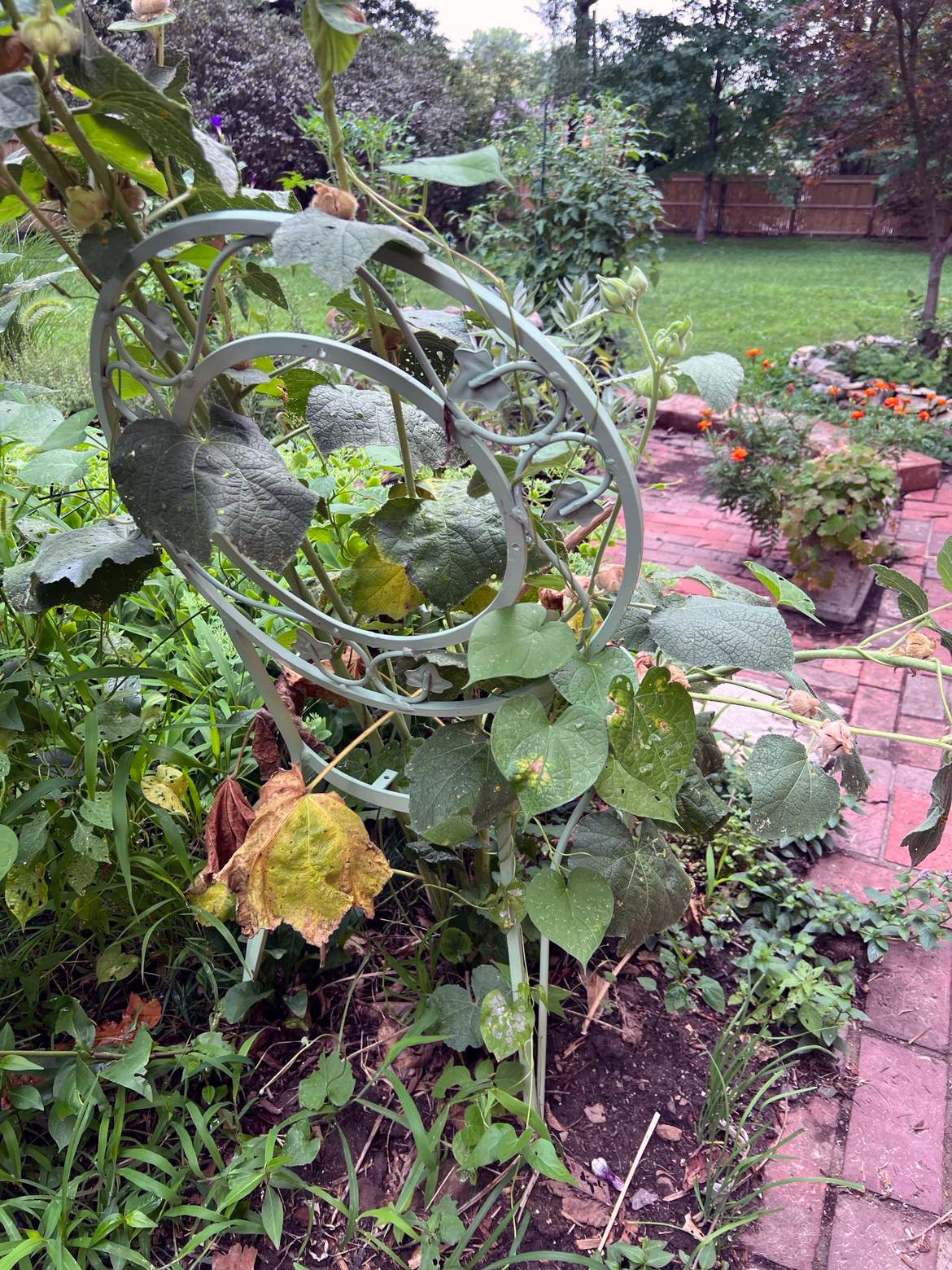A relative offered this chair earlier this year, saying, “It’s great chair that just needs a new seat.” Little did he know it was destined to become a Grow-Through chair.
It’s a bit ironic quoting Robert Frost – with that icy surname – as we experience the height of summer here on Snob Hill, but we sweatily embrace his notion that, “The best way out is always through.” The heat and humidity of life here have definitely “built” as they say. The two Hs are a fact of life here in the upper south, an area that may well become the middle south as the planet warms.
We have no choice but to embrace the weather and be grateful for air conditioning. Things may slow a bit in the summer, but they don’t stop. We visited an architectural salvage “yard” last weekend and acquired a length of wrought iron railing for an upcoming project. We also brought home two metal chairs to add to our collection of what we call “Grow-Through” chairs.
This became a thing several years ago when one of us brought home a chair, plucked from a pile of free items on a neighbor’s lawn. We said at the time, “Don’t know why I picked this up, but I like it.” The chair was missing part of its back and had no seat (as none of the Grow-Though chairs have had). For reasons lost to us now, we spray painted the chair purple – a color not in the usual Snob Hill palate. We moved the Purple Chair around the property for a few years before hitting upon the idea to use it as a decorative plant support. That seemed like a risky thing to do because it skirted the practice of repurposing old toilets as planters or bathtubs as grottos for virgin mary statues.
The original Grow-Through, the Purple Chair.
We strive always in the gardens of Snob Hill for balance and conservative use of decorations. With the two new chairs (painted a chartreuse similar to that of the potato vine in a front planter) we don’t want to overdo the use of Grow-Throughs, but these, with their mismatched grape cluster backs, are a welcome addition. It’s too late in the garden season to use them, but we have decided to try to use all of the chairs in what will become the trial Chair Garden.
The Grow-Though chairs serve more than one purpose. Yes, they support tall plants. We like this year’s for a clump of Bee Balm and the first Hollyhock we’ve ever grown successfully. The chairs support the plants, especially after rain, and they protect them from our big-butted dog Maggie, who can unintentionally decimate a garden with her sashaying hind quarters.
We think of our bees, who begin their winter preparations with the summer solstice. The heat and humidity can be unpleasant, but that’s life in this part of the world at this time of year. The cold and too-dry days are ahead of us, and we will dream back to today’s enveloping summer season.
The Grape Chairs, painted and ready for next year’s Chair Garden.


